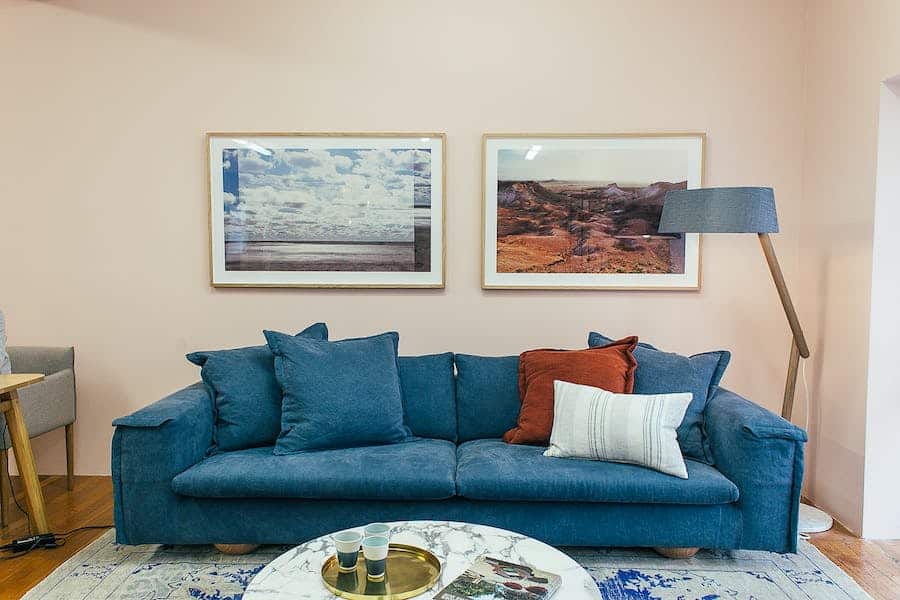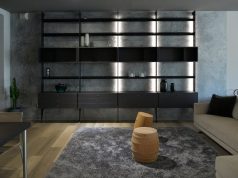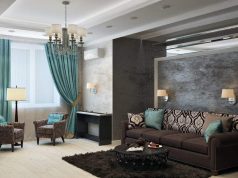Where spaces are transformed into aesthetically pleasing and functional environments, form is a cornerstone. Form, one of the fundamental elements of design, transcends mere aesthetics; it plays a pivotal role in defining the character and atmosphere of a space. Whether arranging furniture in your living room or envisioning the layout of a commercial workspace, understanding the essence of form is essential. In this comprehensive guide, we will delve deep into the multifaceted world of form in interior design, exploring its definition, elements, principles, and practical applications. By the end, you’ll be equipped with the knowledge to harness the power of form, transforming your interior design endeavors into captivating, harmonious, and functional spaces.
What Is Form In Interior Design?
In interior design, “form” refers to the shape, structure, and three-dimensional quality of objects and elements within a space. It encompasses everything from the shapes of furniture and architectural features to the spatial arrangements and the visual relationships between objects. Form plays a crucial role in defining the aesthetics, functionality, and overall feel of an interior space. Designers use various forms, whether geometric or organic, to create visual interest, establish balance, and manipulate the perception of space. Understanding and effectively employing form is essential for crafting appealing and functional interior designs.
The Basics Of Form
The concept of form is fundamental in various aspects of life, including art, design, and nature. In the context of design and aesthetics, form refers to the three-dimensional shape and structure of an object or element. Understanding the basics of form is essential in art, architecture, and interior design. Here are some critical aspects of the basics of form:
Form exists in three dimensions: length, width, and height. These dimensions give an object volume and depth. In interior design, considering furniture dimensions, architectural elements, and decor is crucial for creating a balanced and functional space.
Forms can be categorized into two primary types: geometric and organic. Geometric forms, such as cubes, spheres, and cylinders, have precise, regular shapes and are often associated with modern and minimalist designs. Organic forms, on the other hand, are irregular and asymmetrical, resembling shapes found in nature. These forms can add a sense of warmth and spontaneity to a design.
Form is not just about the physical shape of an object; it also plays a significant role in defining the spatial qualities of a room. The arrangement of forms within a space can affect how people perceive and move through that space. Designers use the form to manipulate spatial relationships and create a specific atmosphere or flow.
The use of form in design has evolved throughout history. Different design movements and periods, from the ornate forms of the Baroque era to the sleek lines of modernism, have emphasized various aspects of form. Understanding the historical context of form can provide valuable insights for contemporary design.
How Lines Define And Create Form?
Lines are fundamental in defining and creating form in various design disciplines, including interior design, architecture, and art. They serve as the building blocks that give shape, structure, and character to objects and spaces. Here’s how lines define and create form:
Outline And Contour:
Lines are often used to create the outline or contour of an object or space. They define the boundaries, edges, and shapes of elements within a design. In interior design, for example, the lines of furniture, architectural features, and room layout help establish the overall form and layout of a space.
Shape And Structure:
Lines can shape and structure various design elements. For instance, vertical lines can impart a sense of height and strength, while horizontal lines can suggest stability and tranquility. Diagonal lines, on the other hand, introduce dynamic energy and movement. The arrangement and direction of lines influence the perceived form and mood of a design.
Depth And Perspective:
Lines can create an illusion of depth and perspective. In two-dimensional art and design, techniques like linear perspective use converging lines to give the impression of depth and distance. In interior design, the strategic placement of lines can make a room appear larger or more intimate, depending on the desired effect.
Texture And Detail:
Lines can convey texture and detail within a form. For instance, fine lines represent intricate details in a piece of furniture, while bold lines emphasize the robustness of a structural element. The thickness, spacing, and type of lines contribute to the tactile and visual qualities of a form.
Hierarchy And Emphasis:
Lines can establish a hierarchy of importance within a design. Bold, prominent lines can draw attention and be focal points, while more subtle lines provide support and context. This hierarchy of lines helps guide the viewer’s eye and reinforces the overall form and composition.
Contrast And Harmony:
The interaction between lines, such as straight and curved lines or vertical and horizontal lines, can create visual contrast or harmony. Contrast can add interest and complexity to a design, while harmony can create a sense of balance and unity within the form.
Principles Of Form In Interior Design
The principles of form in interior design are fundamental guidelines that designers follow to create harmonious and visually pleasing spaces. These principles help establish balance, unity, and coherence in a design by manipulating the shapes, structures, and three-dimensional aspects of elements within a space. Here are the fundamental principles of form in interior design:
Proportion And Scale: Proportion refers to the size relationship between different elements within a space. Achieving proper proportion ensures that elements are in harmony with each other and the overall space. Scale, conversely, pertains to the size of objects in the human body and the room itself. Maintaining the right scale ensures furniture and architectural features fit comfortably within the space.
Balance: Balance involves the distribution of visual weight in a design. It can be achieved through symmetrical (formal) or asymmetrical (informal) arrangements. Symmetrical balance implies that elements on one side of a central axis mirror those on the other, creating a sense of equilibrium. Asymmetrical balance, on the other hand, relies on visual balance achieved through the careful placement of dissimilar elements.
Harmony And Unity: Harmony is achieved when all design elements work together cohesively. It involves creating a sense of consistency and continuity throughout the space. Unity, similarly, is the principle of ensuring that all elements in a design belong together, forming a coherent whole. A harmonious and unified design feels complete and visually pleasing.
Emphasis And Focal Points: Emphasis involves drawing attention to specific elements or areas within a space. Designers use the form to create focal points that serve as visual anchors and add interest to a room. This can be achieved through contrasting forms, bold shapes, or unique objects that stand out from the rest of the design.
Contrast And Variety: Contrast involves juxtaposing elements to create visual interest and make elements stand out. Various forms, such as mixing geometric and organic shapes or combining smooth and textured surfaces, can add depth and richness to a design.
Rhythm And Repetition: Rhythm is the visual flow created by repeating and alternating elements within a design. Designers use form to establish patterns and rhythms, which can lead the eye through a space and create a sense of movement. Repetition of forms and shapes can provide continuity and coherence in a design.
Simplicity And Complexity: The principle of simplicity encourages using clean, straightforward forms and minimal elements, creating a sense of elegance and tranquility. Complexity, on the other hand, involves incorporating intricate and detailed forms to add depth and richness to a design. The balance between simplicity and complexity depends on the desired aesthetic and functional goals.
Hierarchy Of Forms: Establishing a hierarchy of forms helps define the importance of different elements within a space. Certain forms may be emphasized as focal points, while others serve supporting roles. This hierarchy guides the viewer’s eye and contributes to the overall composition.
FAQ’s
How Can I Use Form To Make A Small Room Appear Larger?
In a small room, consider using furniture with clean lines and simple forms to create a sense of openness. Avoid bulky or oversized items that can overwhelm the space. Incorporating mirrors and reflective surfaces can also enhance the perception of space by manipulating form.
What Are Some Common Examples Of Geometric Forms In Interior Design?
Geometric forms include shapes like squares, rectangles, circles, and triangles. Common examples in interior design include rectangular dining tables, circular rugs, square tiles, and triangular wall art.
How Do Interior Designers Balance Form And Function?
Achieving a balance between form and function is a key challenge for interior designers. They do this by carefully selecting furniture, materials, and layouts that not only look good but also serve the practical needs of the space. This often involves optimizing the use of space while maintaining a pleasing aesthetic.





















